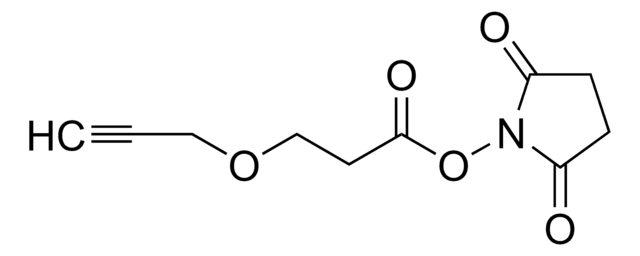902551
BocNH-PEG4-acid
Sinónimos:
2,2-Dimethyl-4-oxo-3,8,11,14,17-pentaoxa-5-azanonadecan-19-oic acid, Boc-NH-PEG4-CH2COOH
Seleccione un Tamaño
129,50 €
Precio de catálogo259,00 €Ahorre 50 %Seleccione un Tamaño
About This Item
129,50 €
Precio de catálogo259,00 €Ahorre 50 %Productos recomendados
Formulario
liquid
idoneidad de la reacción
reaction type: Pegylations
reagent type: cross-linking reagent
índice de refracción
n/D 1.4641
densidad
1.1395 g/mL
grupo funcional
Boc
amine
carboxylic acid
temp. de almacenamiento
−20°C
cadena SMILES
OC(COCCOCCOCCOCCNC(OC(C)(C)C)=O)=O
InChI
1S/C15H29NO8/c1-15(2,3)24-14(19)16-4-5-20-6-7-21-8-9-22-10-11-23-12-13(17)18/h4-12H2,1-3H3,(H,16,19)(H,17,18)
Clave InChI
SHMYENBXRNPSOG-UHFFFAOYSA-N
Categorías relacionadas
Aplicación
Technology Spotlight: Degrader Building Blocks for Targeted Protein Degradation
Otras notas
Información legal
Producto relacionado
Código de clase de almacenamiento
10 - Combustible liquids
Clase de riesgo para el agua (WGK)
WGK 3
Punto de inflamabilidad (°F)
Not applicable
Punto de inflamabilidad (°C)
Not applicable
Elija entre una de las versiones más recientes:
Certificados de análisis (COA)
¿No ve la versión correcta?
Si necesita una versión concreta, puede buscar un certificado específico por el número de lote.
¿Ya tiene este producto?
Encuentre la documentación para los productos que ha comprado recientemente en la Biblioteca de documentos.
Filtros activos
Nuestro equipo de científicos tiene experiencia en todas las áreas de investigación: Ciencias de la vida, Ciencia de los materiales, Síntesis química, Cromatografía, Analítica y muchas otras.
Póngase en contacto con el Servicio técnico








